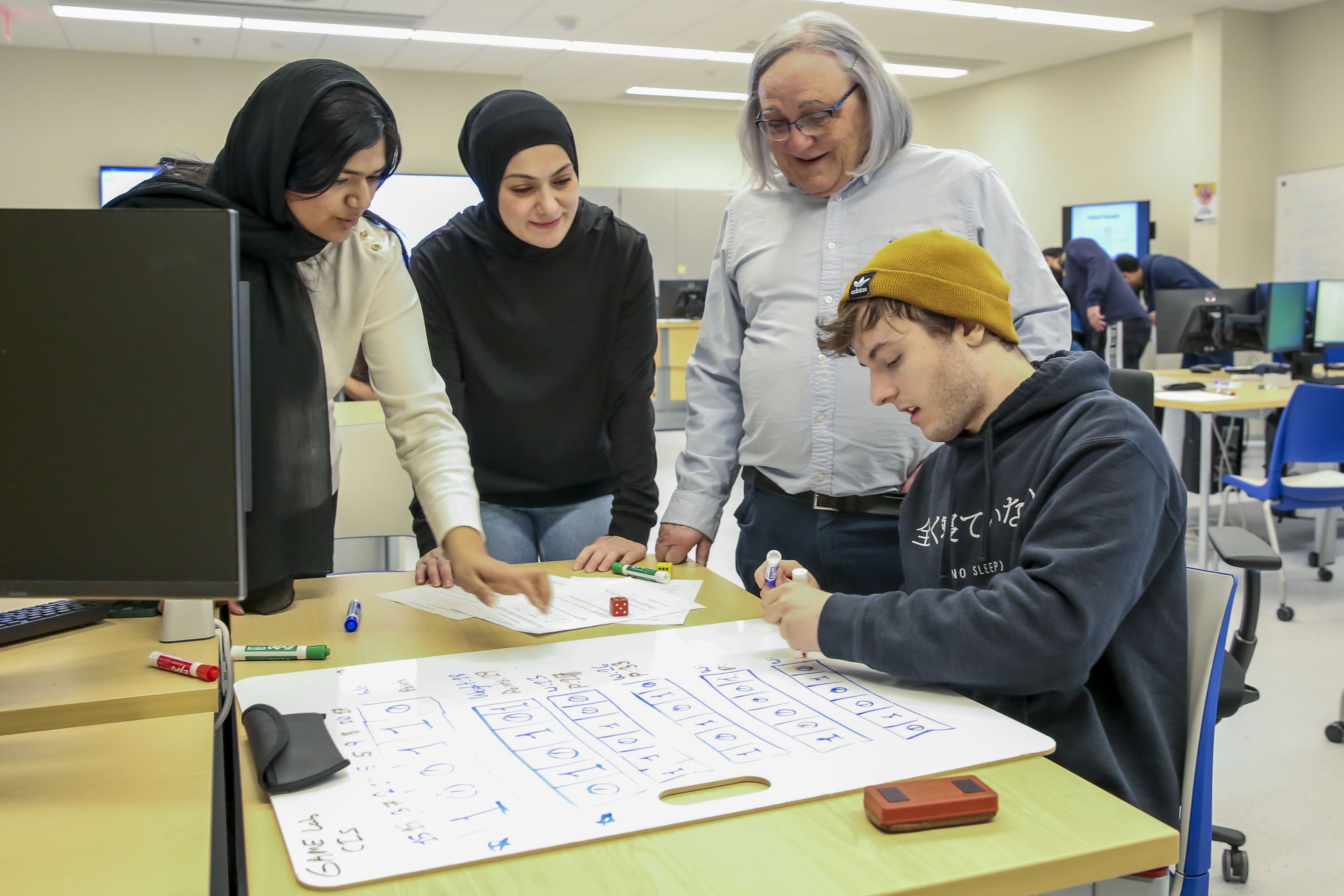The day I’m scheduled to talk with Bruce Maxim, the first of two conversations we’re to have about his four-decade-long career at UM-Dearborn, he’s about 15 minutes late. When he does log on to Zoom, he explains that he lost track of time; he was finishing a letter of recommendation for a student. He tells me he does about 30 or 40 of these a year, which, though no one keeps statistics on such things, sounds like a lot. In any case, it feels like a window into the status Maxim holds among his students that so many would put their faith in him for something requiring a personal touch. It perhaps also feels noteworthy because Maxim doesn’t come across as a particularly gushy person. His care vibe is more that of a straight-talking father or grandfather. A little soft around the edges, yes, but mostly someone you love and respect because he’ll always make time for you and you can count on him for useful, life-tested guidance. True to form, Maxim’s own explanation for why close relationships with students have become part of his yearly routine is concise and straightforward. “I think I just listen to them,” he says. “I had a student who came to me early in the semester because she was going to miss some time because she was getting married and was going on her honeymoon. And so a couple weeks later, I asked her how her trip was, and she just lit up and told me all about it. Honestly, I don’t always remember their names. I’m terrible with names. But I remember stuff about them and what’s important to them.”
Even leading his classes, Maxim says his primary mode of teaching these days is listening, though that reflects a personal evolution. He came of age in academia when lectures were pretty much exclusively how university professors handled themselves in front of students and so that’s how he did it for the first two decades of his career. But in-class lectures haven’t been his go-to for at least a decade. They’re almost as extinct as the final exam, which he did away with a number of years ago to make time for student presentations. He does generally ask students to do a before-class reading assignment and maybe watch an essentials-only recorded lecture that rarely exceeds 15 minutes. That leaves class time for groups projects, role-playing exercises, student presentations and feedback — what he still calls “active learning,” an antecedent of project- or practice-based learning, which, today, is one of the major cross-college education initiatives at UM-Dearborn. If it’s one of the early weeks in his popular game design course, for instance, students might present a paper prototype storyboard for their game so they can get feedback from the other students. If it’s his software engineering course, one group might pretend to be a client who needs a new software application, while another group role plays as the developer, the two engaging in a fact-finding back-and-forth that Maxim says any successful developer has to get good at. He says subjects for the projects are always of the students’ choosing, noting he has little interest in hearing 15 students present the same project over and over. Maxim, himself, usually spends class time just walking around the room, eavesdropping on students as they problem solve, “offering a pithy critique” as needed to help them push through an obstacle. To accommodate all the brainstorming, feedback and on-the-fly design, he used to carry eight 2-feet-by-4-feet white boards from his office to class and back. Now, he loves teaching in the new Engineering Lab Building classrooms, where students can literally write on the glass walls. The state-of-the-art architecture has finally caught up with his educational philosophy.
The trust he puts in students to direct their own learning is certainly part of what’s made Maxim one of the most beloved professors at UM-Dearborn. But his ability to connect with his students likely also has something to do with the fact that, had he been born 50 years later, he’d probably be just like a lot of them. At age 72, Maxim is still relatable. For example, he loves video games — he’s been playing them since the 1970s and still plays today, though much less and now he prefers games that don’t feel all-consuming. (He is, however, indulging his granddaughter's desire to teach him Minecraft.) With his interest in technology, it’s also hard not seeing a Gen Z Maxim find his way, as he did as a student in the 1970s, into the computer science field. Today, that’s a pretty straightforward path for students, but it was a lot different back then. He says when he enrolled as an undergraduate at the University of Michigan in 1970, there were just two classes in computer science, which, at that time, was still seen as a branch of mathematics. It certainly wasn’t something you could major in. When I ask him how, then, he ended up in the field, he actually has to take a second to think about exactly how it all happened.



